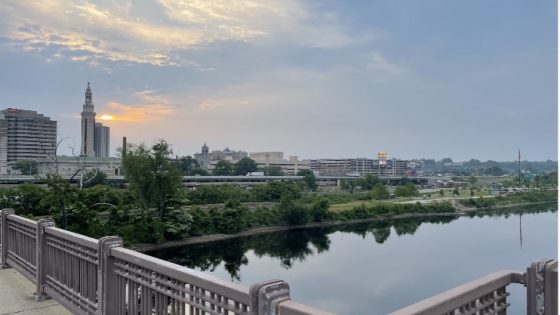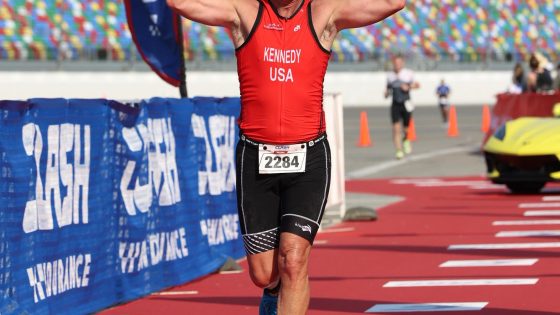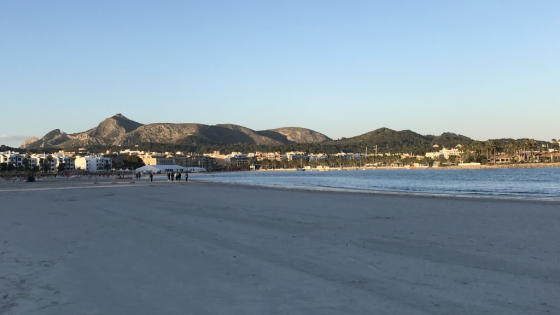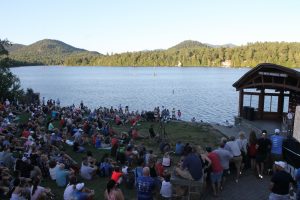
The opening ceremony was fun, but followed the standard format
Ironman Lake Placid 2018 was a 20th anniversary event, so you would expect something special and different, right? Well, as it happened there wan’t much that was sooo different, but we did ride a revised bike course and there was 20th anniversary branding on everything. Not spectacular enough for you? No problem, all the specialness was reserved for a 20th anniversary Lake Placid weather appearance.
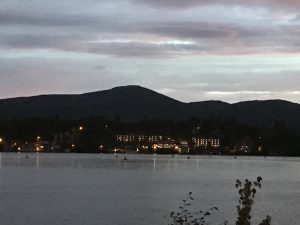
No doubt about it, Mirror Lake is a beautiful setting
The swim course in Mirror Lake was unchanged from previous years, and remains one of the best IM swim courses in my experience. The rectangle is easy to navigate, not just because it’s all straight lines and clear water, but particularly due to the cable three feet down that guides you the whole way. There’s a bit of a fight in the early part to get onto the cable line, but the rolling start helps and the water opens up fairly quickly. Spectators get a good view of the start and changeover for the second loop and exit. Plus there were suit strippers aplenty which is always a plus for a wetsuit legal swim. It’s a long run to T1 (if you include running around transition, it was roughly 0.4 of a mile according to my Garmin), but mats keep your feet from the worst of the rough paving.
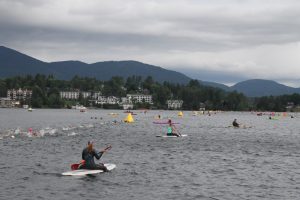
Well marked and plenty of attention to safety, it’s an excellent swim course
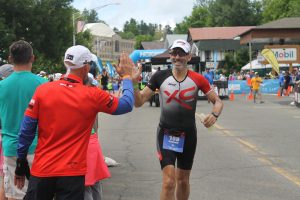
At this point I was still smiling…
As for me, IM Lake Placid was the first 140.6 I ever did and this was my fifth start there, so it has a special place in my triathlon memories. I had a good swim, an okay bike, and an on-plan start to the run. Then at mile 17 my stomach shut down and that was pretty much the end of my competitiveness. As for so many others, GI issues and nutrition are the hardest nuts to crack for me. It’s a journey that can be dispiriting at times, but that makes IM distance the true test of ones mettle and, perversely, the rewarding experience it is.


